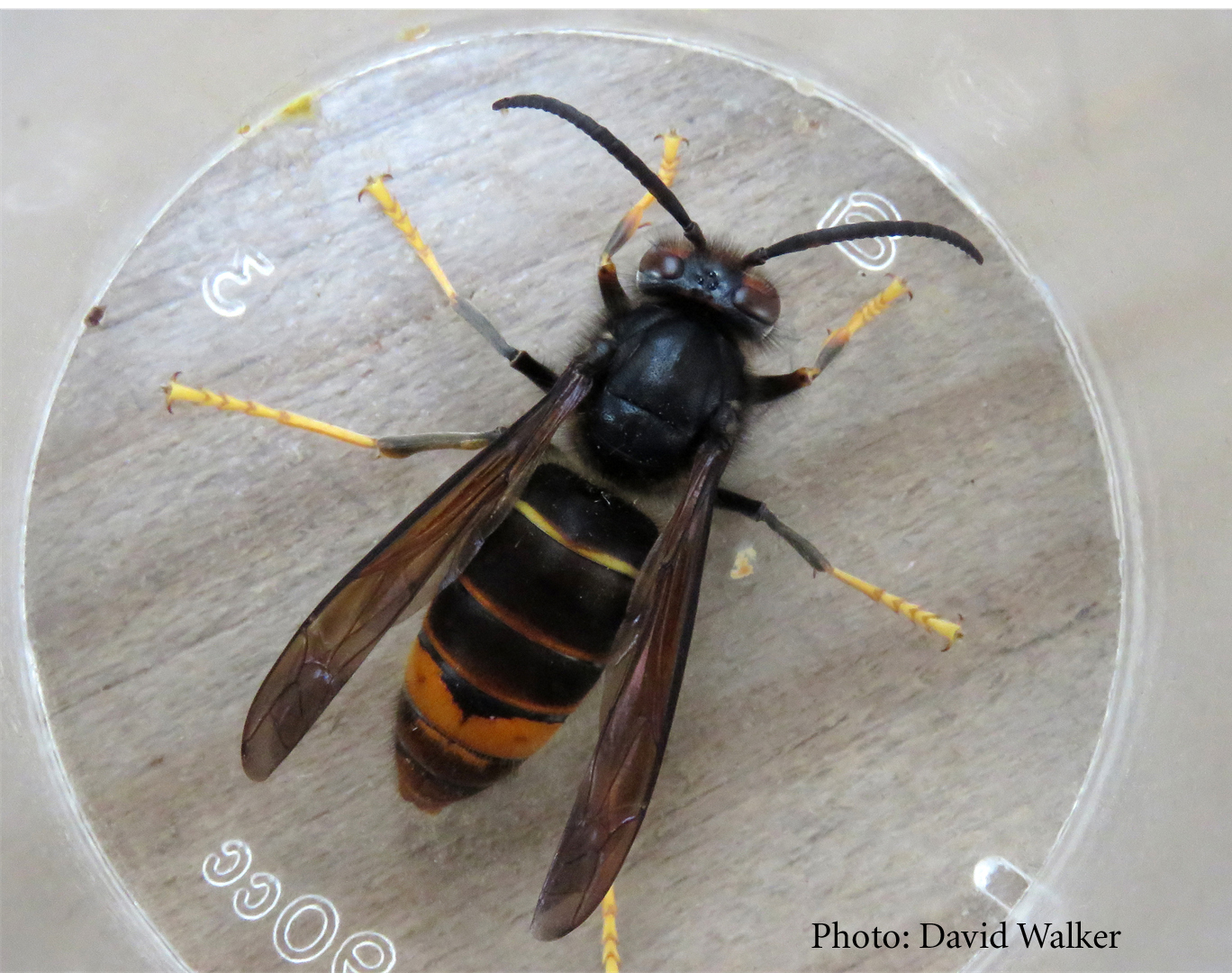Report an Asian hornet sighting or nest
Report your sightings:
Don’t report to us your UK or USA sightings. For the UK, find information on
sightings Asian hornet on GOV.UK. For the USA, contact your State Department of Agriculture.
You should report all suspected nests. Never try to disturb, remove or treat a nest yourself. Asian hornets can aggressively defend their nest area.
If you find an individual hornet, you can capture it:
- from November to June, and keep it until we advise you
- from July to October, and release it once you have reported your sighting. It would be helpful to know which direction it flies off in
Only capture a hornet if it can be done safely.
Why Asian hornets are dangerous
Asian hornets are also known as a yellow-legged hornet.
The Asian Hornet arrived in Jersey in August 2016. Every year we destroy many nests to control its spread.
A single insect presents the same threat to humans as wasps or European hornets. However, If a nest is disturbed they can react aggressively to defend it, and can sting multiple times
In Jersey, Asian Hornets are also an invasive species because they are aggressive predators of native insects. They are also a threat to honeybees.
What do they look like
Asian hornets have:
- bodies that are generally dark in colour with black and dark brown
- rears that are dark brown with a distinct yellow or mustard band
- fine waists with a bright yellow 'belt'
- legs which have a brown upper part with distinct yellow lower leg
- black heads with orange and yellow faces
- sleek shapes similar to wasps
Worker hornets measure up to 25mm in length. Queens measure up to 33mm. They have a smaller size to the European Hornet but larger than the Common Wasp.

European hornets sightings
European hornets are often confused with Asian hornets but are native to Jersey.
They can sting and usually you can find their nests in tree hollows. You should never disturb their nests.
European hornets are not an invasive species, and Natural Environment doesn’t deal with their nests.
If you see a nest and are concerned about the risks to humans, you should inform the landowner. Your Parish Hall may be able to help you do this.
Comparison between an European and Asian hornet

Advice when you’re working outside
Asian hornets’ nests can be well camouflaged in foliage and very difficult to see.
Early in the season nests can be the size of a tennis ball. From late July they can be the size of a football and larger.
When you’re working outside, you should:
- examine the area before you start work
- look for any unusual insect activity or anything that could be a hornet's nest
- stop if you suspect unusual insect activity or a nest
- stay at least 10 metres away from a nest. Don’t touch, disturb or cause vibrations around it
-
report any possible hornet or nest sightings
You usually find nests high in trees but also in:
- brambles
- hedges
- garden sheds
- building and roof spaces
- cliffs
- the ground
Dealing with a sting from a hornet
Immediately move to a safe place if you’re stung. One sting can lead to an aggressive reaction by more hornets.
A sting will usually cause a red, swollen lump. This may be painful and itchy, but symptoms should improve within a few hours or days.
Some people can have an allergic reaction.
Always seek medical advice if:
- the sting is in the mouth, throat or near the eyes
- fever, swollen glands for flu-like symptoms develop
- symptoms don't improve or get worse
Find more information on dealing with a sting from a bee, wasp or hornet.